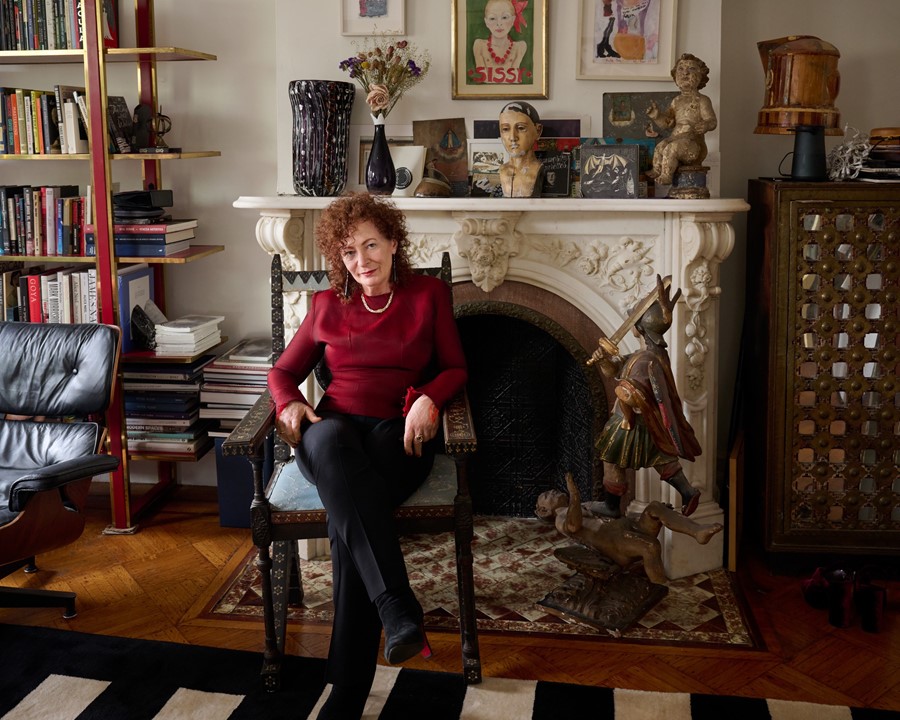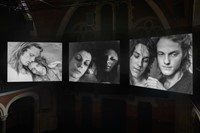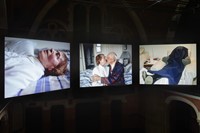Now screening in London with Gagosian, Nan Goldin’s film Sisters, Saints, Sibyls is a visceral meditation on martyrdom, mental health, addiction and rebellion
Sisters, Saints, Sibyls is the kind of artwork that lingers in your mind long after you’ve finished looking. Created by American photographer and activist Nan Goldin, the 30-minute film tells the story of Goldin’s elder sister, Barbara, who was sent to a psychiatric detention centre at the age of 12, and took her own life at 18 (Barbara was a central figure in All The Beauty And The Bloodshed, Laura Poitras’s Oscar-nominated documentary about Goldin’s life and activism against the Sackler family).
Sisters, Saints, Sibyls, which mixes family photos, religious imagery, and Goldin’s own images and videos in slideshow, is a gut-wrenching meditation on martyrdom, mental health and rebellion. Like all of the artist’s work, the film packs a punch so hard as to be practically visceral; when she first screened it in Paris in 2004, some audience members fainted after seeing distressing images of Goldin stubbing out lit cigarettes on her forearm. Such is the artist’s indomitable power – she looks closely at things others would rather look away from; things like self-harm, sex, violence and addiction.
Now, Gagosian is screening Sisters, Saints, Sibyls in London at the Welsh chapel, a dilapidated, deconscrated church in Soho. Goldin joined Gagosian’s roster in 2023, after leaving Marian Goodman Gallery, citing her desire to expand her global profile as an artist. “Nobody poached me,” she told the New York Times of her decision to move to one of the world’s most powerful commercial galleries. “And joining Gagosian will not in any way compromise my political activism.”
In the church’s pitch-black, domed space, Sisters, Saints, Sibyls is projected across three video screens, mirroring the triptych format of classical religious paintings (the film begins with the myth of the Christian martyr Saint Barbara, who shares a name with Goldin’s sister). Part of the gallery’s Gagosian Open series, where art is shown off-site in unusual spaces (last year, Gagosian put on a Christo show at a crumbling, Grade II-listed Georgian house in Spitalfields), the location is perfect for Sisters, Saints, Sibyls; a former church and a nightclub, the Welsh chapel also has a connection to the queer history of surrounding Soho; Goldin has captured the LGBTQ+ community ever since she first picked up a camera – The Ballad of Sexual Dependency, her most well-known series, captures friends and lovers amidst the HIV/Aids epidemic of the 1980s.
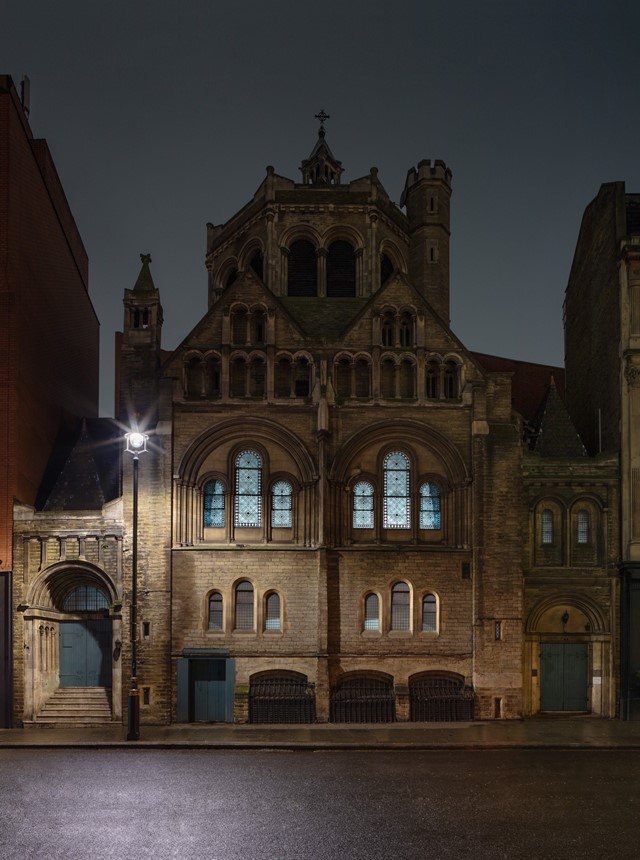
Sisters, Saints, Sibyls is a highly sensory experience. Amidst voiceover recounting Barbara’s life, there are loud claps of thunder, violent arguments, whispers, and blisteringly emotional music by This Mortal Coil, Johnny Cash, Nick Cave, and Leonard Cohen. There’s plenty of video footage of the places in which Barbara’s life unfolded; her suburban family home in Maryland, the psychiatric detention centre she was held, the train tracks where she took her life, and finally, her gravestone. Although these places are devoid of beauty, architecturally monotonous and stifling as they are, Goldin pays close attention to them anyway, zooming in on the minutiae of her beloved sister’s life in an attempt to remember her, and not look away as her parents did (with catastrophic consequences).
The film shifts in tone after Barbara’s suicide; Goldin recounts how she moved away from home at the age of 14 to find her own family, falling in with drag queens in downtown Boston. “Drugs set me free,” she says, in sparse voiceover. “Later they became my prison.” Then comes a slideshow of astonishing photos documenting Goldin’s relapse into drugs and alcohol, her admittance into hospital, and her recovery at the Priory rehab in London. There are tender photos of loved ones, raw self-portraits, haunting landscapes and quiet still lifes of flowers, which populate the modest bedrooms in which Goldin gets clean from drugs and alcohol, and are laid on her sister’s grave – potent symbols of beauty, transience, and regeneration.
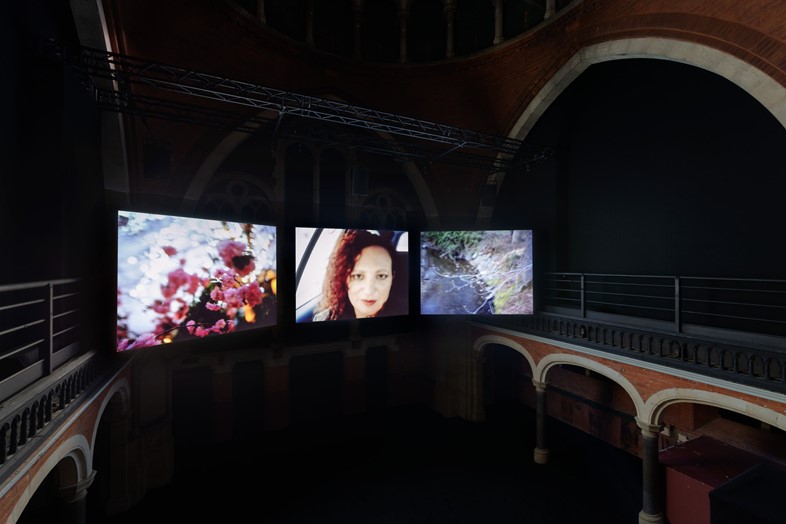
“So many families have experienced loss, trauma and grief; often they are never spoken of,” says Kay Pallister, one of the curators at Gagosian who worked on the show. “Through this work, Nan bravely shares her own story of familial fragility and sheds light on how we might find our own families and tribes in life – those who may become our saviours.”
The film, like much of Goldin’s other work, is in memory of her sister Barbara, and is dedicated to “all our sisters who have committed suicide or been institutionalised for their rebellion”. Barbara, as Goldin makes clear, taught her so much about how to live a passionate and truthful life. “Like any great artwork, Sisters, Saints, Sibyls will resonate differently for each individual audience member,” says Pallister. “There is a powerful message at the heart of it about how art and community can help you find a way through life, even in the darkest times.”
Sisters, Saints, Sibyls by Nan Goldin is on show as part of Gagosian Open at 83 Charing Cross Road in London until June 23.
